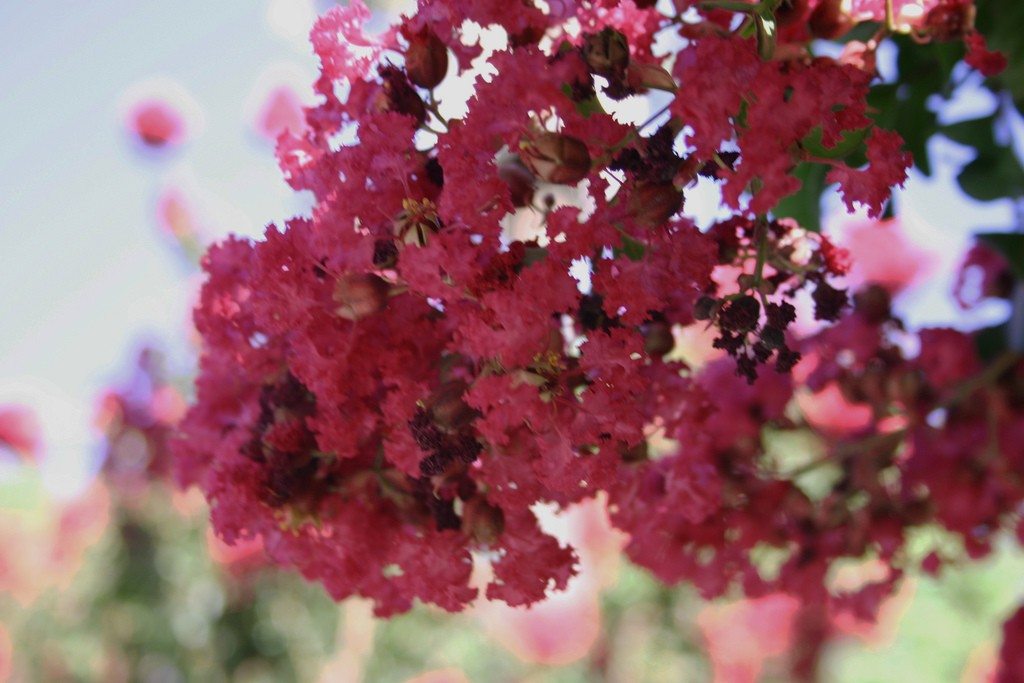Information On Crepe Myrtle Tree Problems


Crepe myrtle plants are somewhat particular. They require six to eight hours of full sunshine in order to grow flowers. They are drought tolerant but, during dry periods, require some water to continue flowering. If they are fertilized with nitrogen fertilizers, they may grow very thick foliage but not very many, if any, flowers. They are pretty hardy, yet there are crepe myrtle problems.
Crepe Myrtle Tree Problems
When pruning crepe myrtle, you have to be careful not to cause any crepe myrtle problems. What happens is if you heavily prune your crepe myrtle tree, it will cause the tree to put all their energy into growing new leaves and limbs. This means that no energy will be expended by the tree for flowers, which causes the crepe myrtle problems. When planting a new crepe myrtle, be careful not to plant the tree too deep into the soil. Crepe myrtle tree problems include robbing the tree of oxygen right from the get-go. When you plant the crepe myrtle, you want the top of the root ball to be just level with the soil so that the root ball can gather oxygen. Without oxygen, the plant cannot grow, and, in fact, the tree will actually start to decline. Other crepe myrtle tree problems include not having enough water during dry periods. In order for your crepe myrtle tree to grow well, you need to make sure it has enough water to ensure normal growth. Mulching around the tree can help the soil maintain enough moisture during drought periods.
Crepe Myrtle Diseases and Pests
Most crepe myrtle disease is caused by pests. Crepe myrtle pests include aphids and mold. When it comes to aphids, these crepe myrtle pests need to be washed off the tree with a forceful water bath or spray. You can use an environmentally safe pesticide or insecticide to wash the tree along with water. Another of the crepe myrtle pests is sooty mold. Sooty mold doesn't harm the plant and will go away by itself so long as you control the aphids. Japanese beetles are another of the crepe myrtle pests that should be mentioned. These bugs will eat the tree. Their larvae are complete pests and with enough of these beetles, can destroy a whole tree. In order to prevent crepe myrtle problems with these pests, you can use insecticides and traps. Keeping your crepe myrtle healthy isn't that difficult, it just requires a little work on your part to eliminate pests and provide the appropriate atmosphere for the tree to thrive.
Sign up for the Gardening Know How newsletter today and receive a free copy of our e-book "How to Grow Delicious Tomatoes".

Kathee Mierzejewski was with Gardening Know How in the very beginning, writing many of the site's foundational articles.